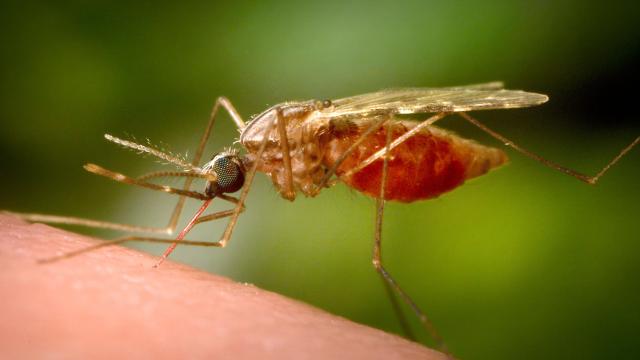Mosquito season is in full swing across the U.S., and this year’s annual boom of summertime blood suckers comes with some additional bad news. For the first time since 2003, malaria is spreading in the states. Both Florida and Texas have confirmed locally acquired cases of the potentially deadly mosquito-borne illness.
In Florida, four cases have been recorded — all within close geographic proximity — according to a Monday advisory from the Centres for Disease Control and Prevention. A state-level health alert from earlier this month warns of possible transmission in both Sarasota and Manatee counties on Florida’s Gulf Coast. In Texas, the CDC notes that one locally transmitted malaria case has been confirmed. A Cameron County resident is believed to have contracted the illness while working outside, according to a statement from the Texas Department of State Health Services. So far, there is no evidence that the Texas case is related to the Florida cases.
All five infected people are receiving treatment and recovering, per the CDC. Both states’ health departments are conducting ongoing investigations, in partnership with federal experts, to better determine where the malaria came from. More information on the exact origin could help staunch the disease’s spread through targeted mosquito eradication efforts.
Malaria is caused by any one of five protozoan parasites in Plasmodium genus and transmitted by Anopheles mosquitos. Worldwide, it infects more than 240 million people every year. In 2020, an estimated 627,000 people died of the parasitic disease. However, with proper, swift treatment, many of these deaths would be preventable. About 95% of malaria cases and deaths occur in Africa, though the illness also spreads across large swathes of South and Southeast Asia, Central and South America, the Caribbean, the Middle East, and Oceania.
Once, malaria was widely transmitted in the U.S. too. It was a prevalent disease throughout the 19th century, responsible for more than 45 out of every 1,000 deaths in 1850. Cases began to decline with human landscape changes — namely urbanisation and elimination of mosquito habitats like wetlands. Then, between 1947 and 1951, U.S. public health authorities waged a successful eradication campaign against the parasite — mostly through widespread application of the (ecologically devastating) pesticide DDT, which killed a whole lot of mosquitos.
Though about 2,000 malaria cases (and a handful of deaths) occur in the U.S. every year, nearly all of these are the result of international travel and immigration to/from areas where malaria is endemic. Yet in the five newly detected cases, none of those infected had recently been to malarial areas.
Despite decades without the disease, Anopheles mosquitos were never eliminated in the United States. The pest and its potential to spread disease have always been in the background. But according to CDC tracking, it’s been about 20 years since the last time local malaria spread was noted in the U.S. In 2003, eight people in Palm Beach County, Florida acquired the disease.
Despite the new local transmissions, the CDC says that “the risk of locally acquired malaria remains extremely low in the United States.” The agency recommends that the public take standard steps to prevent mosquito bites like using insect repellent, wearing long clothing, and eliminating standing water nearby dwellings. If you have recently been to an area where malaria occurs and developed early symptoms of malaria like fever, chills, headache, body aches, or fatigue, seek medical care.
And be aware that, even if the Texas and Florida outbreaks are quickly contained, increased malaria risk lurks on the horizon for many people around the world — U.S. residents included. As the climate warms, disease-spreading mosquitos are growing in number, expanding their ranges, and transmitting more illnesses, according to mounting research. One 2021 study found that rising temperatures are expected to increase dengue and malaria risk, and the potential area of epidemic spread, in North America.
